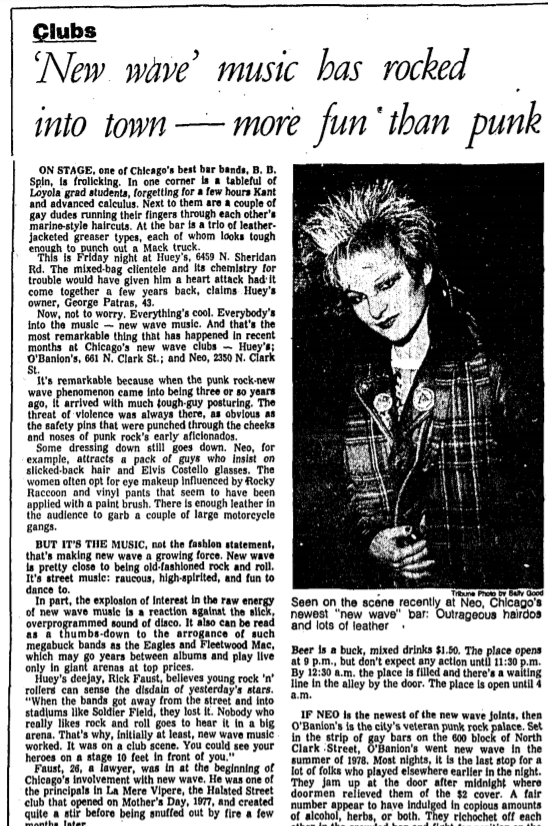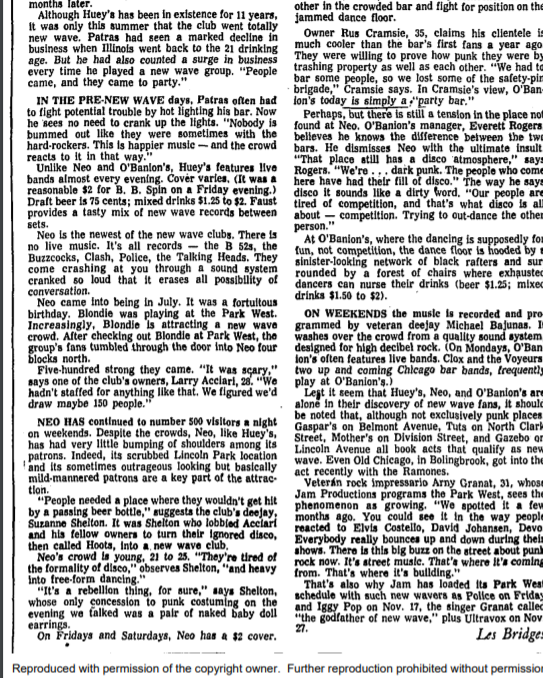Don’t Call It Punk: the New Wave
1976-1983
“What we did was recycle a mod-’60s look with more of a ripped-up, tough, street feel.”
Debbie Harry (2016)
In 1976, music began to change. Teens had grown up witnessing the garage bands of the 1960s and their DIY aesthetic. They watched Rock n’ Rollers shake everyone in the crowd into a dance frenzy. They sat, enraptured, as the music world started to slow around them. Now it was their turn.
New Wave as a genre did not take the stage until the late 1970s and early 1980s. I limit my project from between the years 1976 and 1983 because I would argue these are the years that most fully encapsulate the movement before it starts altering drastically.
New Wave was the bridge movement between Rock n’ Roll and Punk of the 1960s and 1970s and the mainstream rise of Pop in the 1980s. Pioneered by white, middle- to working-class older teens and young adults, the music is defined, not by what it necessarily included, but by what it was missing. It wasn’t Punk because it wasn’t rooted in hard melodies and anti-establishment sentiment. It wasn’t Post-Punk because these musicians weren’t necessarily disillusioned with Punk’s formulaic nature. It wasn’t Rock n’ Roll because while they wanted to make danceable music, the guitars and saxophones of old were no longer the leading instruments. And it wasn’t quite Pop(ular music), because it wasn’t necessarily aimed at making hits. (addition: Pop music as we know it today didn’t really take off until the advent of MTV in 1981. Before then, Pop(ular music) could have been any genre but since it topped the charts, it was deemed Pop. It wasn’t until after the New Wave that we get the typical boppy, electronic, highly vocal-centered Pop that we think of today.)
At the beginning of the New Wave, the artists weren’t focused on making music that would lead to their commercial success, they were focused on making music for the heck of it. It was a creative outlet that could be scraped together with your friends like loose change from a sofa. No one needed, or really had, any sort of formal training. Instruments could be purchased second hand, your sister could sing lead, and the venue could be the barn behind your parents’ house. It was a genre of possibility.
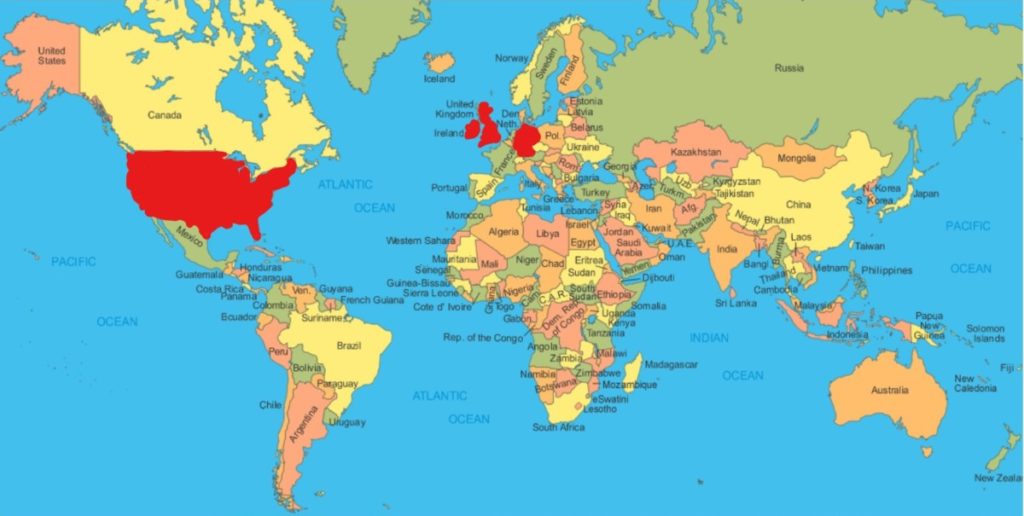
Media Opinions from Home and Abroad
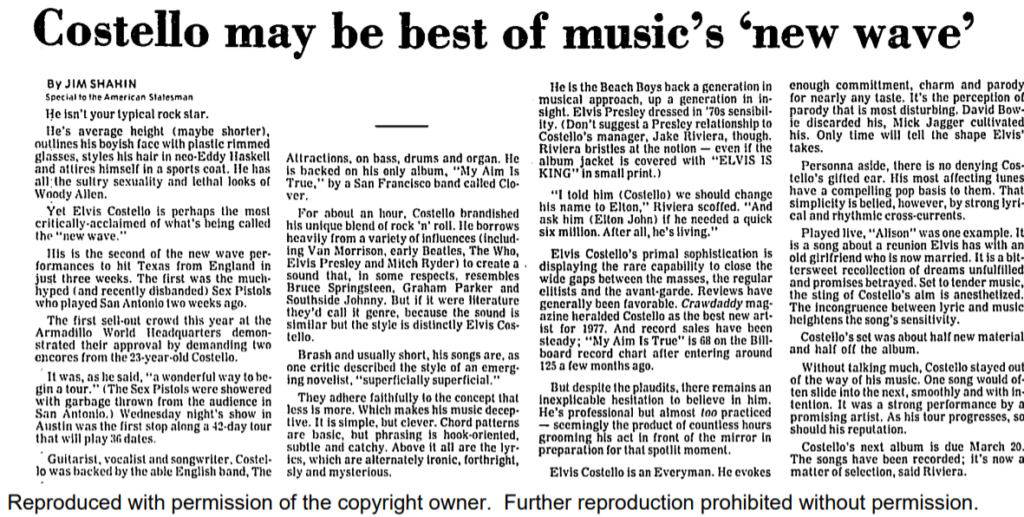
This series of newspaper articles are from around the country and the world. I wanted something that was going to encapsulate the discourse within the musical community regarding these musicians and the budding genre. The first article, penned by Jim Shahin of the Austin American Statesman, is detailing the look and feel of an Elvis Costello concert that occurred in January of 1987. Elvis Costello, the stage name of Declan Patrick MacManus, is the world’s first notable New Wave artist. His eclectic look and melodies punched a hole in the music scene, and the author lauds Costello’s ability to bring together “the masses, the regular elitists and the avant-garde”.

The second article comes from across the pond in Dublin, Ireland. Author Brian Bell of the Irish Times foretells the coming New Wave movement take-over in the US in the wake of the genre’s success in the UK. He breaks down the genre’s progression as well as its then-current state of flux. He goes on to illustrate the precipice of change the music industry is waiting upon, poised for a shake-up. I found it interesting that the author chose to use “Punk” in the headline. Before the jump to the US, New Wave was very closely tied to Punk, bleeding in and out of one another throughout their growth. In this article, we see the lack of a difference preserved in print and opinion.
The third article, written by Les Bridges of the Chicago Tribune, details another origin story of New Wave, this time rooted in disillusionment with the “overproduction” of disco and the commercialism of “mega-buck bands”. Through the rest of the article, Bridges goes on to explain the rise of the underground club where New Wave found its home in Chicago, as opposed to the discotheque, the stadium, and the brawler bar. I thought it interesting for the author to make this distinction, implying that the venues that New Wave was played in lent themselves to part of the culture around the music.
CBGB & OMFUG: The Home of New Wave

Wall in CBGB’s 
CBGB’s Restroom 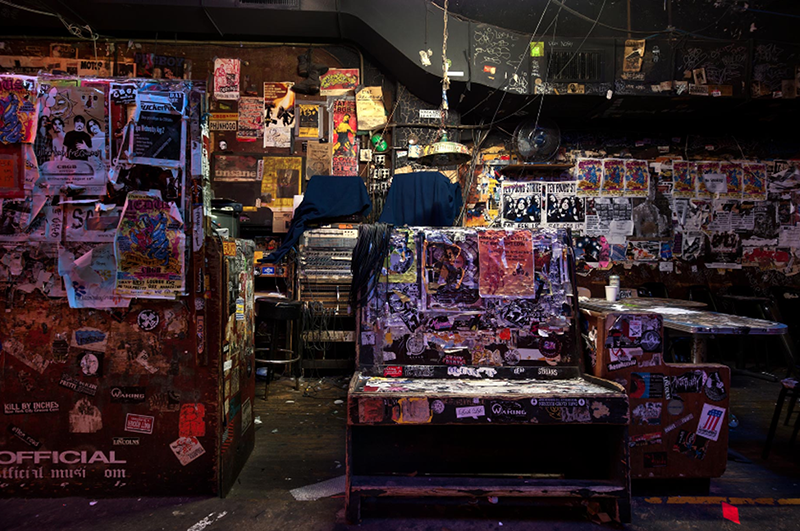
CBGB’s Sound Booth 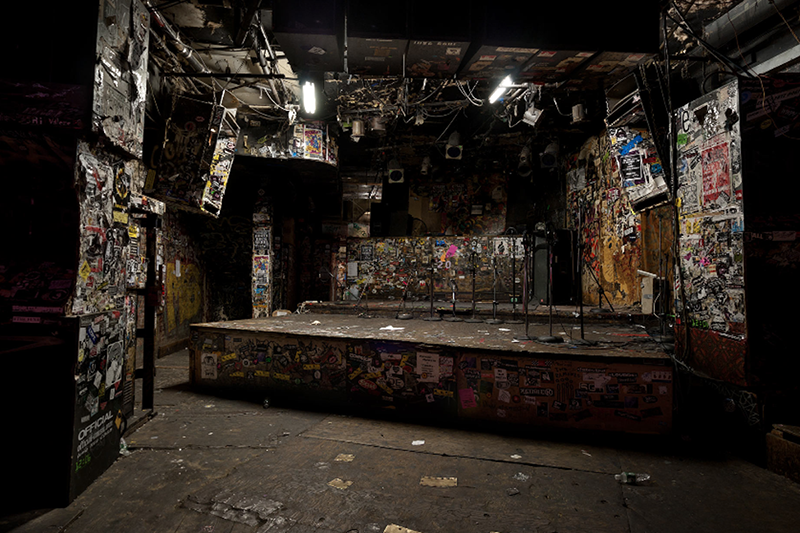
CBGB’s Main Stage
Founded in New York in 1973 by Hilly Kristal, the club was initially going to be a bluegrass/blues club. However, as the venue opened and starting hosting bands, it became soon apparent that that would not be the type of music displayed on its stage. By 1976, underground groups flocked to the Bowery in New York City to get a chance to play on the poster-covered venue. CBGB came to be the home of every upcoming, underground band in the New Wave. Bands such as Television, Talking Heads, The B-52’s, and Blondie found their place on that stage. Without CBGB, these budding groups wouldn’t have had an outlet to play in nor would the audience have had an opportunity to listen to their music; New Wave would not have found its footing in the US.
Sire Records Flyer
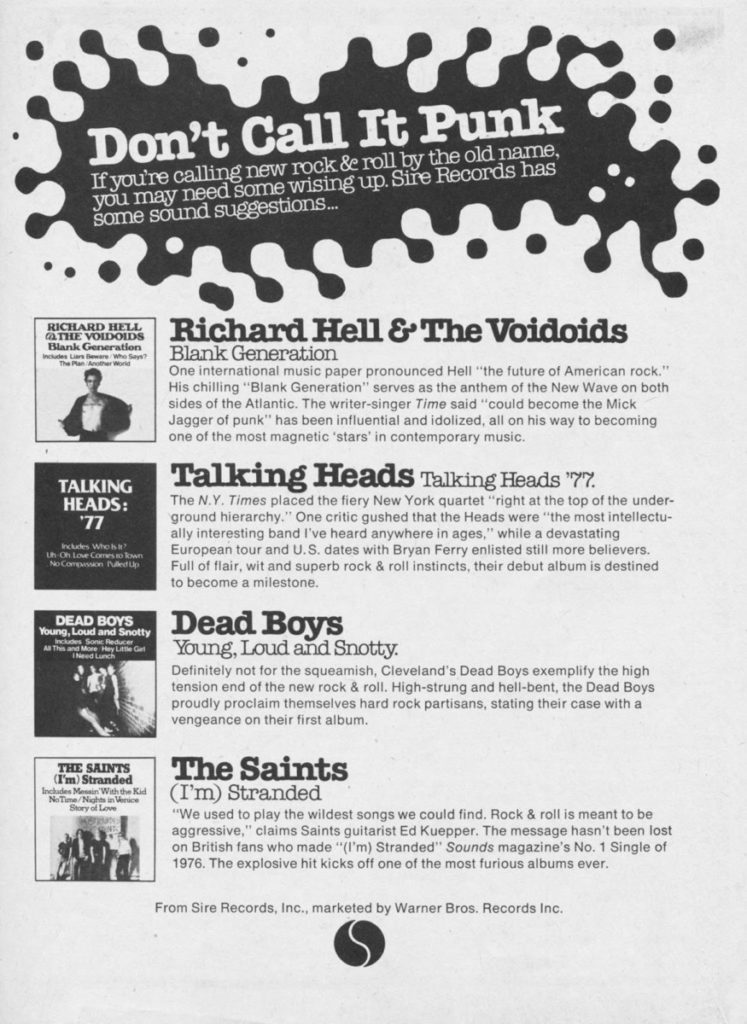
As the New Wave picked up momentum, record labels both small and large tried to sign artists. Sire Records, founded by Seymour Stein and Richard Gottehrer in 1966, was the pioneer of the independent, up and coming artist. Though an American label, Stein and Gottehrer pushed to sign underground British and European artists that could then be introduced in the US.
This flyer, distributed by Sire Records, describes their “Don’t Call It Punk” campaign. Trying to distance themselves from the hardcore nature of Punk, record labels leaned into the New Wave moniker. They marketed it as the natural progression of Rock n’ Roll; the successor to Pop(ular Music). I think this flyer lends a lot of nuance to the discourse on music genres because New Wave became a partial commercial construct through these types of campaigns which contrasted with the intentions the artists had for their individual messages.
Blondie on the Cover of Rolling Stone
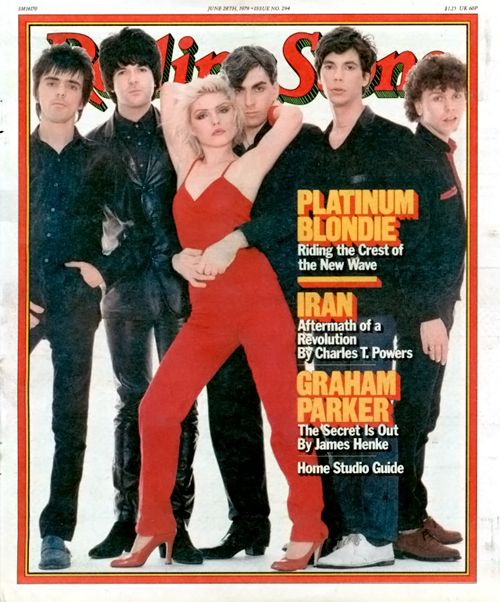
Blondie, one of the most influential groups in New Wave, was founded in 1974 by Chris Stein and Debbie Harry. Both witnessed the budding NEw Wave scene in New York and wanted to be a part of it. After a few members adding and swapping, the lineup settled with Harry on vocals, Stein on lead guitar, Frank Infante on backing guitar, Jimmy Destri on keys, Nigel Harrison on bass, and Clem Burke on drums. Their music, initially focusing on punk aspects, came to embrace more of the New Wave sounds they are remembered for.
This Rolling Stone cover was issued in 1979 following the release of Blondie’s third studio album, Parallel Lines (1978). Though the group had previous success in the UK and Europe, becoming the first American New Wave group to chart well in the UK, Parallel Lines rocketed Blondie to the top of the charts worldwide with singles such as “Hanging on the Telephone” and later “Heart of Glass”. This cover signals Blondie’s, and New Wave’s, move into the musical spotlight.
The New Wave in Europe
The next iteration of the New Wave happened in Germany. Specifically in larger cities amongst the younger generation, the Neue Deutsche Welle took off in the wake of the British punk movement and the American New Wave. Their music had the anti-establishment focus of Punk with the DIY-chic packaging of the New Wave.
This music video for Berlin by Neue Deutsche Welle group Ideal illustrates the environment this type of music thrived in. The song runs through the city of Berlin with the singer, hitting the best sights and hottest club, Dschungel (Jungle). The video doesn’t stray far from the song’s message but instead provides a visual guide to the city you are hearing about. The Berlin Wall is also featured heavily in the video as a hallmark of the city. No matter where the camera goes, footage of the wall, blank or painted, isn’t far off.
The End of the New Wave
After the launch of MTV on August 1st, 1981, things began to change again. The music that arrived post-1981 was highly centered on widespread, commercial success. With the new platform of music tv at their disposal, record labels (and many musicians) changed their approach to making hits rather than wholistic music. This is why we have a rise in New Wave one-hit-wonders after 1981. Though artists had previously had single hits, they were much rarer than in the early days of New Wave.
With 1983 came the close of the New Wave genre. By that point, most New Wave groups had moved on to larger projects and genres or dropped from music completely. As we’ve seen with other genres throughout this course, New Wave didn’t die, it evolved into something different in order to continue to grow and influence the music scene both in the US and around the world.
if you want to take a listen:
Citations:
https://www.rollingstone.com/music/music-news/platinum-blondie-117401/
http://www.thatdevilmusic.com/2016/08/fossils-sire-records-dont-call-it-punk.html
Various Wikipedia pages including: Sire Records, New Wave Artists, Elvis Costello, Neue Deutsche Welle, and Blondie
